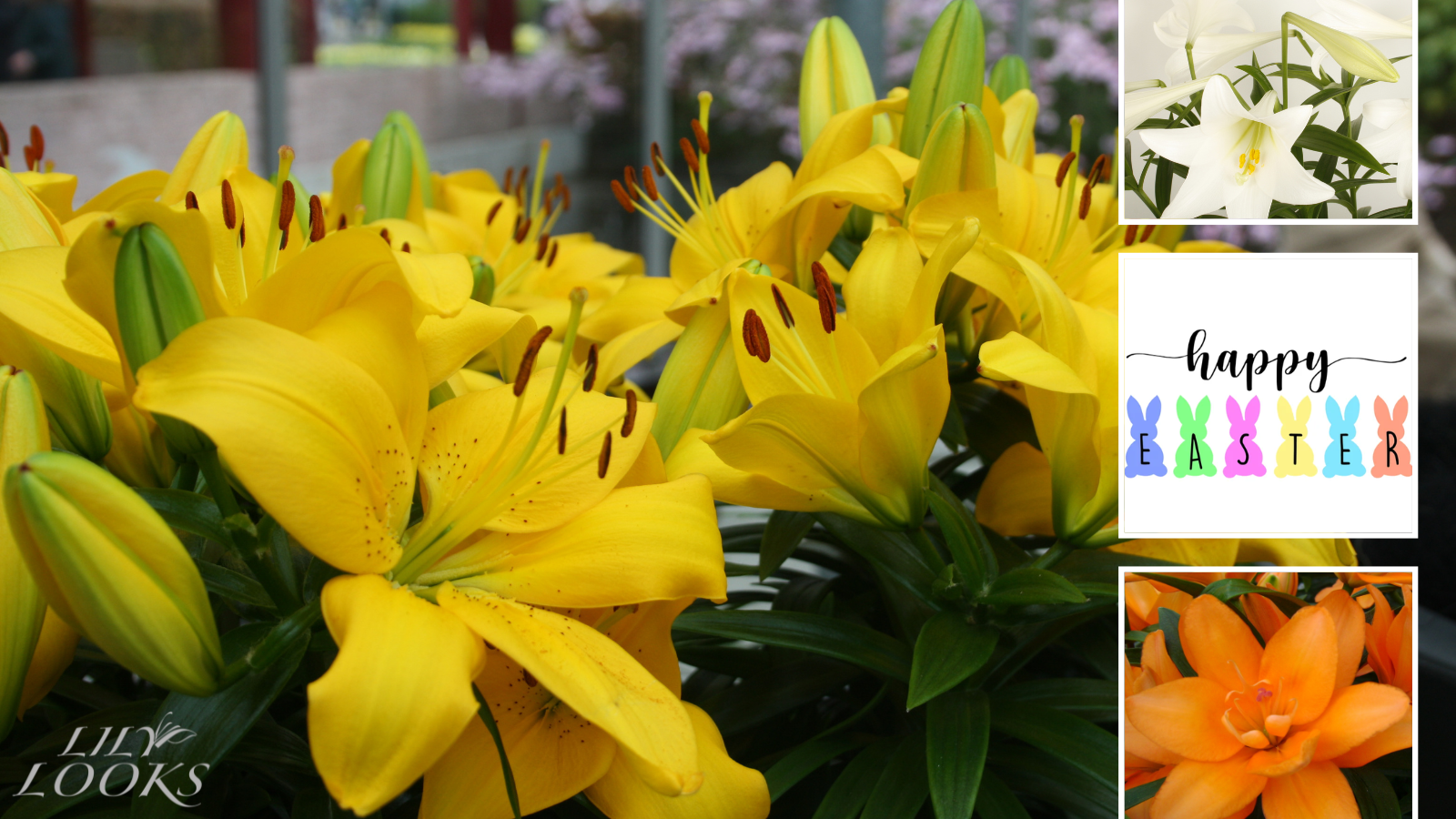Unlock the secret world of Easter Flowers. Their history, symbolism, and the top 10 varietes!
Easter flowers have been an integral part of celebrations since ancient times. Symbolizing rebirth and renewal, they brighten up homes and churches during this special season. Yellow, in particular, has become synonymous with Easter due to its association with sunshine, happiness, and the warmth of spring. It’s no surprise that many Easter flowers feature this uplifting hue. Additionally, the use of eggs in Easter floral arrangements highlights the theme of new life and fertility, as eggs represent the promise of future generations.
If you’re looking for flower options for this Easter, you should know there are a lot. However, you give the 10 most popular Easter flowers:
- Lilies
- Daffodils
- Tulips
- Hyacinths
- Irises
- Chrysanthemums
- Calla Lilies
- Roses
- Primroses
- Marigolds
These international types of Easter flowers have been carefully selected for their captivating beauty and deep symbolism. Each bloom brings its unique charm and significance to the Easter celebration, making them perfect for adorning homes and gardens.
Lilies: The Classic Easter Flowers
Lilies are a classic Easter flower symbolizing purity and resurrection. That make them a favorite for Easter celebrations worldwide. Lilies, particularly white ones, are often associated with the Virgin Mary and the resurrection of Jesus Christ, adding an extra layer of spiritual meaning to their presence during Easter.
Rebirth for Easter: Daffodils
Daffodils are popular Easter flowers symbolizing rebirth and new beginnings. Their bright yellow blooms are often associated with the sun’s warmth, making them a perfect choice for springtime celebrations. In Christian tradition, daffodils are believed to have bloomed during Christ’s resurrection, further solidifying their connection to Easter.
Spring Meets Easter: Tulips
Originally from Central Asia, tulips are now synonymous with the Netherlands. Their vibrant colors and elegant shape make tulips a popular choice for Easter decorations. Tulips symbolize love, rebirth, and the arrival of spring. In Christianity, their vibrant hues are believed to represent God’s grace and love for humanity.
Fragrant Easter Flowers: Hyacinths
Hyacinths are known for their intoxicating fragrance and delicate, clustered blooms. These Easter flowers symbolize peace of mind, sincerity, and playfulness. In Christian tradition, hyacinths are associated with rebirth and resurrection, making them a fitting addition to Easter celebrations.
Versatile Easter Flowers: Irises
Irises are versatile flowers for Easter with a rich history. They symbolize faith, hope, and wisdom. In Christian art, the iris is often used to represent the Virgin Mary, adding a spiritual dimension to its presence during Easter. Its sword-like leaves are also said to symbolize the pain Jesus endured during his crucifixion.
Joyous Flowers for Easter: Chrysanthemums
Native to Asia and northeastern Europe, these are happy Easter flowers. Chrysanthemums are revered for their diverse colors and intricate petal arrangements. They symbolize joy, optimism, and long life. In some cultures, chrysanthemums are believed to bring good luck and happiness. That’s why Chrysanthemums are a popular choice for Easter celebrations around the world.
Sculptural Flowers for Easter: Calla Lilies
Calla lilies are known for their elegant, sculptural blooms. They symbolize purity, holiness, and faithfulness. In Christian tradition, the calla lily is often associated with the resurrection of Jesus Christ, making it a meaningful addition to Easter floral arrangements.
Friendship Flowers for Easter: Roses and Spray Roses
Yellow roses, known for their warm and sunny hue, are a symbol of friendship, joy, and caring. They are a modern addition to the traditional Easter flowers, but their significance in the celebration is undeniable. Roses have been cultivated for thousands of years, and their beauty and allure have captivated people across the globe. The introduction of yellow roses to the world of floriculture can be traced back to the 18th century when they were discovered in the Middle East.
In the language of flowers, yellow (spray) roses convey feelings of happiness and warmth, making them a perfect choice for Easter celebrations. Their vibrant color is reminiscent of the sun’s rays, which signifies the return of longer days and the awakening of nature after a long winter slumber. The joyful energy that yellow Easter flowers bring can help uplift the spirit and create a festive atmosphere during Easter gatherings.
Moreover, yellow roses are often associated with the Virgin Mary, particularly in her role as the ‘Mystical Rose’. This association lends a spiritual dimension to their presence as one of the most popular Easter flowers. Whether displayed on their own or combined with other blooms, yellow roses are a beautiful and meaningful addition to any Easter celebration, imbuing it with warmth, joy, and a sense of renewal.
Flowers for Easter: Primroses
Primroses are charming flowers with colorful, delicate blooms. They symbolize hope, youth, and eternal love. In Christianity, primroses are associated with the Virgin Mary, and their early spring arrival links them to the theme of rebirth and renewal during Easter.
Easter Flowers Bonus: Marigolds
Yellow marigolds, vibrant and cheerful, are another modern addition to the traditional Easter flowers, bringing a touch of warmth and joy to the celebrations. Marigolds have been cultivated for their beauty and various uses for centuries. Their bold colors and distinctive scent make them a popular choice for festive occasions and spiritual ceremonies.
Yellow marigolds symbolize the sun, light, and positive energy. In many cultures, they represent happiness, prosperity, and a connection to the divine. These associations make them a fitting choice as an Easter flower, a time of renewal, hope, and the return of the sun’s warmth after winter. Their bright yellow hue is reminiscent of the sun’s rays, adding a sense of vitality and cheerfulness to Easter decorations.
